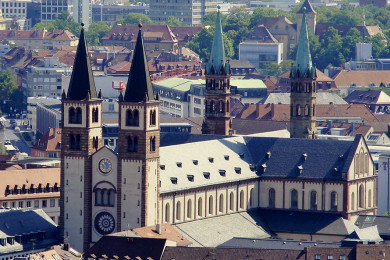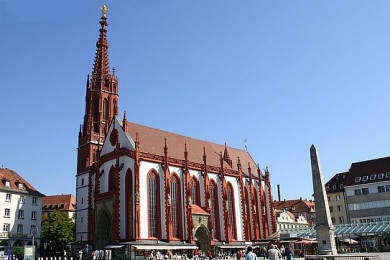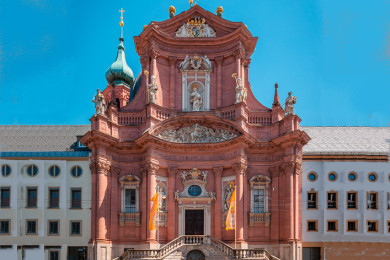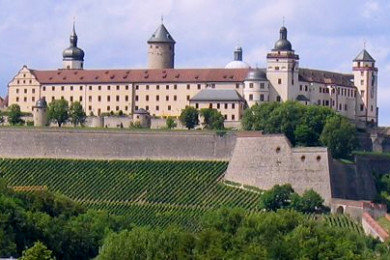The former residence of the Würzburg prince-bishops, built between 1720 and 1744 and completed by 1780, is one of the most important baroque palaces in Europe and is now a UNESCO World Heritage Site.

The planning was entrusted to the then still young and unknown architect Balthasar Neumann by the first client, Prince-Bishop Johann Philipp Franz von Schönborn.
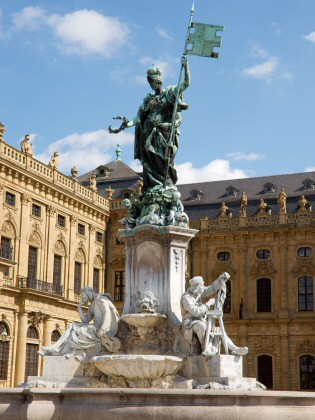
In front of the Residence stands this baroque fountain. It is an allegory of Frankonia with the Würzburg city coat of arms in her hand. The figures on the pedestal are Walther von der Vogelweide, Tilman Riemenschneider and Matthias Grünewald.
Inside the palace, after visiting the Vestibule and the Garden Hall, I slowly walk up the shallow steps in the world-famous staircase (with a guide).
In 1752/53, the Venetian Giovanni Battista Tiepolo created the ceiling fresco
with the four continents for the staircase, which Neumann vaulted without supports.
Measuring 18 x 30 meters in total, it is one of the largest single-part frescoes ever painted.

At the top I enter the White Hall and then the Imperial Hall, also frescoed by Tiepolo.
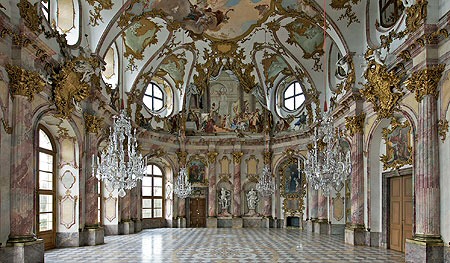
Kaisersaal (Imperial Hall)
The vaults of these main rooms withstood the devastating 1945 Residenz fire, while the ceilings and floors of the imperial rooms adjoining the Kaisersaal were destroyed. Salvaged furnishings and wall paneling made their restoration possible.
As a completion of the reconstruction, the reconstructed Mirror Cabinet could be reopened in 1987. In total, more than 40 castle rooms can be visited, which hold a rich abundance of furniture, knitted carpets, paintings and other art treasures of the 18th century.


